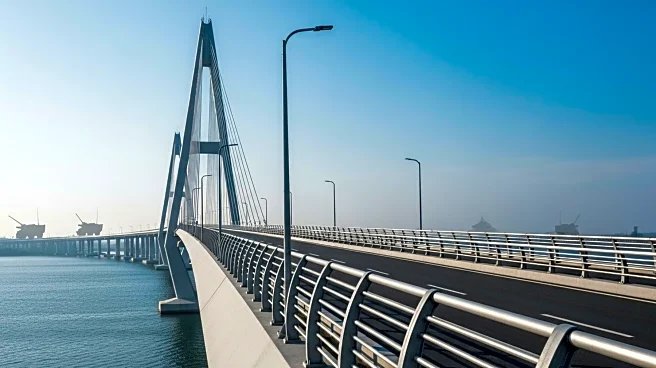What's Happening?
NATO's 2025 defense spending framework, which mandates 5% of GDP be allocated to defense by 2035, has ignited a debate over the classification of infrastructure projects as 'defense-related.' Italy's €13.5 billion Sicily Bridge project, proposed as a dual-use infrastructure to meet the 1.5% target, exemplifies the tension between strategic ambition and fiscal accountability. Critics argue that the project's primary purpose is economic development rather than defense, raising concerns about its environmental and legal challenges. The lack of clear criteria for the 1.5% infrastructure allocation creates a governance vacuum, potentially leading to misallocation of resources.
Why It's Important?
The controversy surrounding the Sicily Bridge highlights the broader challenges of NATO's defense spending targets. While infrastructure projects can stimulate GDP growth, they also risk prioritizing political signals over operational readiness. Italy's high public debt complicates the sustainability of such projects, and the expropriation of properties and environmental concerns could erode public support for NATO commitments. The debate underscores the need for transparency and accountability in defense spending to ensure that investments translate into tangible security gains.
Beyond the Headlines
The Sicily Bridge controversy reflects a broader trend of nations prioritizing political signals over operational readiness, risking long-term fiscal and strategic imbalances. The reclassification of infrastructure as defense expenditure offers a politically attractive path to meet targets but may lack genuine strategic value. As NATO members navigate this balancing act, transparency and accountability will be critical to ensuring that defense spending translates into tangible security gains.












